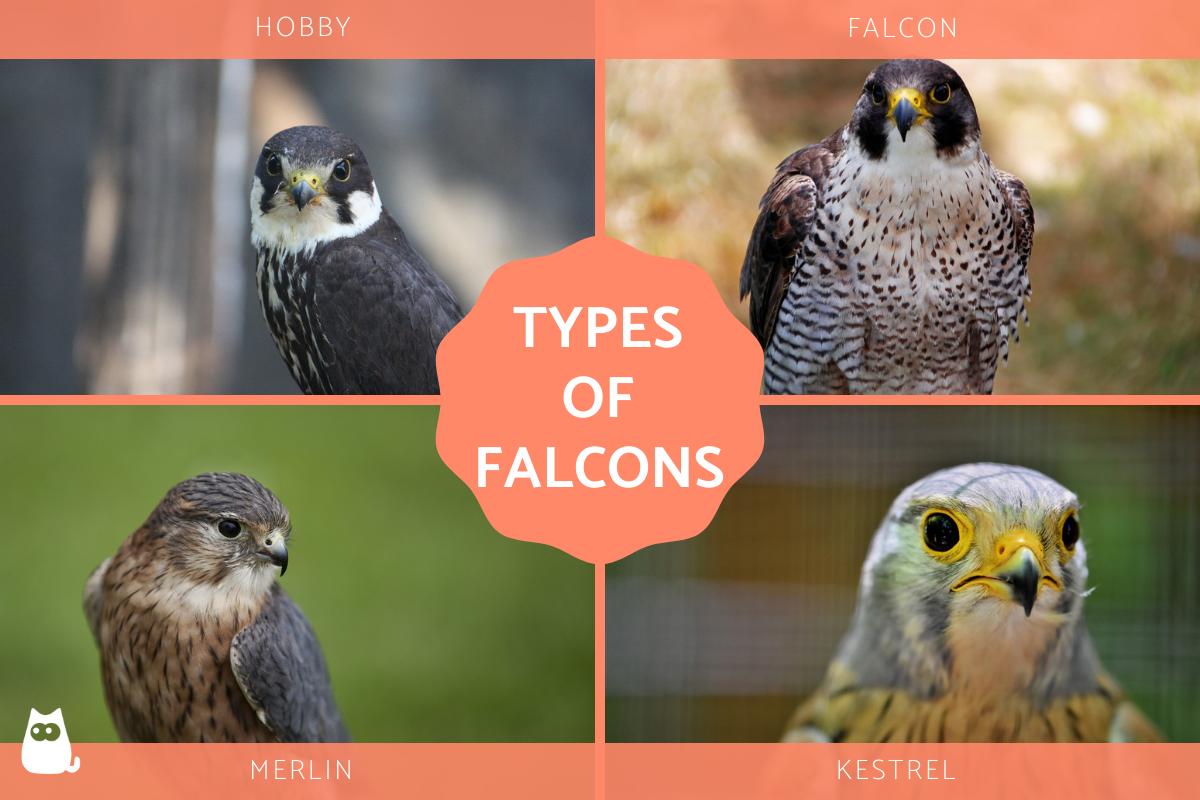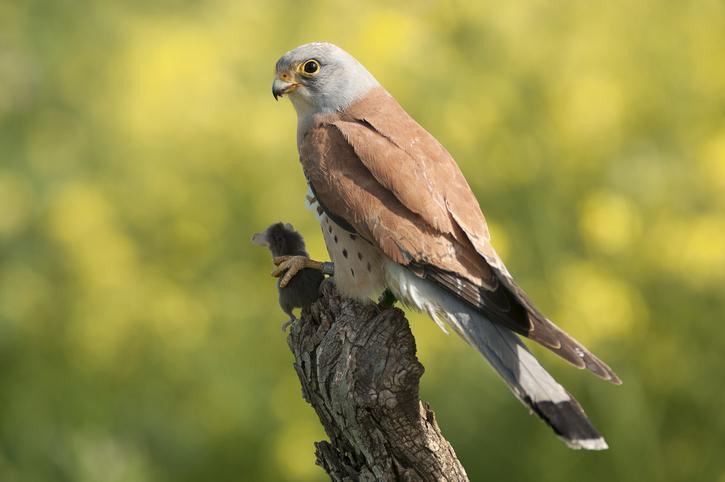Types of Falcons - Species, Names and Characteristics


Falcons are a bird of prey, a group of carnivorous birds which include different families all known as raptors. These birds share various similarities, many of which are adaptations which allow them to be such agile predators. These are traits which all the different types of falcons possess, but even within this group is a certain amount of diversity. All falcons are those which are part of the genus Falco, a genus which is part of a larger family known as Falconidae, itself part of the order Falconiformes. Due to this taxonomy, it can be a little confusing what species are true falcons.
At AnimalWised, we explain what are the different types of falcons, providing information on their species, names and characteristics. While there are other birds which may use the word ‘falcon’ in their common name, we can say there are four general types of falcons, all of which are part of the genus Falco.
How many types of falcons are there?
As stated above, the genus Falco can be loosely grouped into four types of falcons. Each one has a grouping of animals within this same genus, sharing many common characteristics with each other. The differences are largely due to visual or behavioral differences between animals of the same genus. Even within these individual species, we can find different morphs which can be quite distinctive.
One key distinction in behavior between the different types of falcons is their specific hunting strategy. They may also have differences in where they nest, depending on their habitat and other factors. All falcons are incredible hunters. Although they can be hunted by wolves or other predators when on the ground, this is rare since they can fly away with great agility. Their most common predators are larger birds of prey such as certain eagle species.
Although these categorizations are loose, we can say there are four main types of falcon:
- Merlin
- Kestrels
- Hobbies
- Falcons
We will now explain more about these different falcon types with names, characteristics and photos of some select species. Learn more about raptors with our list of the different types of birds of prey.
1. Merlin
Merlins (Falco columbarius) are the smallest type of falcons. The females are larger and more corpulent than the males. The wingspan of these birds ranges from 55 to 69 cm with a marked sexual dimorphism in the plumage. Males have a bluish color on the crown (upper part of the head) and on the dorsal area of their body. Females generally have a browner and more mottled plumage, with longitudinal white streaks on the underparts.
They live throughout Europe, Iceland, North America and Central Asia. They prefer scrub areas or plains with little or no tree cover, avoiding mountainous areas. Merlins are specialists in hunting small birds, such as goldfinches and larks which are very typical of the areas they live. Being larger than males, females can hunt birds similar in size to a magpie. They can also feed on small mammals and large insects.
There are several subspecies of merlin depending on the region. We group these subspecies according to their region:
- Iceland: Falco columbarius subaesalon
- North America: Falco columbarius columbarius, Falco columbarius richardsonii and Falco columbarius suckleyi
- Asia: Falco columbarius insignis, mFalco columbarius pacificus, Falco columbarius pallidus and Falco columbarius lymani
Despite the presence of these subspecies, we can say the merlin is a type of falcon in a group of its own. Not all birds are raptors. Learn about another type with our article on the different types of herbivorous birds.
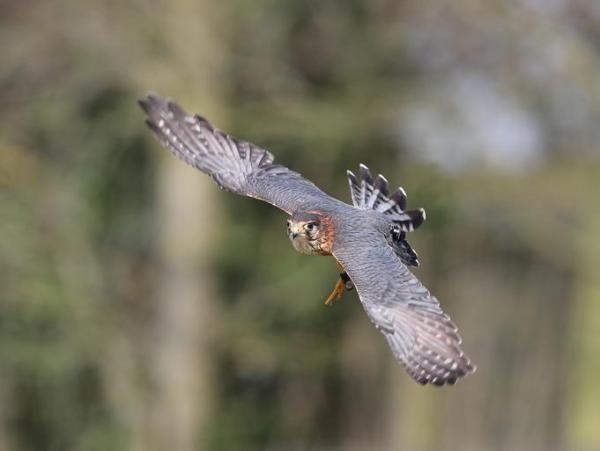
2. Kestrels
There are 16 species of kestrel distributed throughout the world. In Europe and parts of North Africa, we can find two indicative species which are the common kestrel (Falco tinnunculus) and the lesser kestrel (Falco naumanni). Although it doesn't apply to all types of kestrels, both of these birds are migratory. This means their habitat will change, depending on the time of year.
Both common and lesser kestrels have a similar shape, with a long and narrow tail. Both these kestrel species display sexual dimorphism, although it is difficult to tell with these species. They both have mottled plumage and distinct tailfeathers. Common and lesser kestrels can also often be confused with each other since the males both have blue heads, but the lesser kestrel is smaller.
The grouping of different types of kestrels is mainly due to their plumage. The group known as common kestrels (which includes the common kestrel itself) are known for having a malar stripe, i.e. a stripe along their cheek. They also include the following:
- Seychelles kestrel (Falco araea)
- Nankeen kestrel (Falco cenchroides)
- Malagasy kestrel (Falco newtoni)
- Spotted kestrel (Falco moluccensis)
The lesser kestrel is known as a basal kestrel, also known as true kestrels. These are kestrels which originate in Africa and do not have the basal stripe. They also include:
- Greater kestrel (Falco rupicoloides)
- Fox kestrel (Falco alopex)
There are also African grey kestrels known for their distinct grey plumage. The grey kestrel (Falco ardosiaceus) is noted for their bright yellow legs and face, as well as being one of the few birds of prey to also eat vegetable matter.
Finally, we also have the American kestrel, a group of kestrels which contains only one species, the American kestrel (Falco sparverius), commonly known as the sparrow hawk. Despite their name, they are a type of falcon, not a hawk. Their name is related to fact they commonly eat birds such as sparrows. Since they are the smallest type of American falcon, they cannot hunt much larger animals.
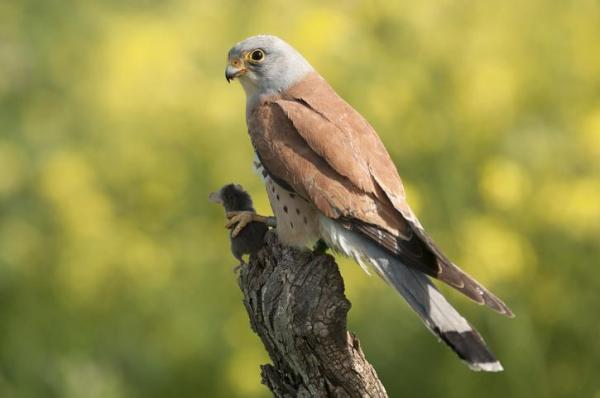
3. Hobbies
A group of small falcon species, hobbies are a considered their own subgenus of Falco known as Hypotriorchis. Much of their similarity is due to their plumage, such as a black malar area and streaks on the underside. The falcons with hobby in their common name are the following:
- African hobby (Falco cuvierii)
- Australian hobby (Falco longipennis)
- Oriental hobby (Falco severus)
- Eurasian hobby (Falco subbuteo)
There are also species of hobby which do not have the word in their common name. These include the sooty falcon (Falco concolor) and the Eleonora's falcon (Falco eleonorae).
As smaller falcon species, hobbies have a diet which is made up of smaller prey. This is the case with the African hobby which is believed to feed exclusively on insects, usually on the wing (i.e. they hunt in the air). They can hunt in groups when there are swarms of insects. Larger hobbies such as the Eurasian hobby will eat other birds and are particularly agile in the air, making them swift raptors.
A characteristics common to all hobbies is the fact they do not build their own nest. Instead, they are known for using the abandoned nests of other birds or even ejecting birds from other types of nests. Although their plumage is similar, females are larger than males. Hobbies live on all continents, with the exception of America and Antarctica.
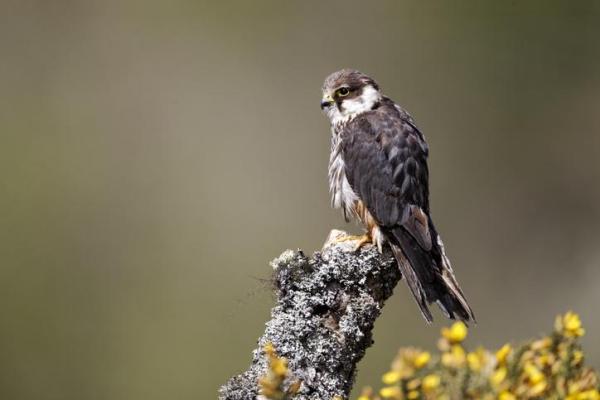
4. Falcons
The last main type of falcon is the Peregrine falcon and its relatives, a group which contains around 18 falcon species. These raptors most commonly have the word ‘falcon’ in their common name, although there are exceptions such as the Eleonora's falcon (Falco eleonorae) which is actually a type of hobby. They are some of the most commonly used in falconry (i.e. hunting with raptors) and have one of the widest distributions of any type of falcon.
The peregrine falcon, sometimes known as the duck hawk or simply the peregrine, is perhaps the most emblematic falcon species. They are a relatively large falcon, with females being larger than males. Their diet is mainly comprised of other birds, especially pigeons, but they can eat other animals such as reptiles. They will even eat other types of falcon such as kestrels and merlins since they have a height advantage.
Another key advantage which makes the peregrine falcon such an acute predator is their speed. Not only are they the fastest type of falcon, but the peregrine falcon is the fastest known bird in the world. They have been clocked reaching speeds up to 242 mph/389 kmph.
Despite differences in size, male and female peregrines are similar in appearance with black or bluish grey feathers on the back and head, an underside with black barring on lighter feathers and a malar stripe. It is believed this malar stripe exists to reduce glare from the sun, another factor which can help make them such good hunters.
Other types of falcon include the gyrfalcon (Falco rusticolus) which is the largest type of falcon. They live in cold areas of North America, the Arctic coasts and other northern areas. Their plumage can vary greatly, but all are spotted to various degrees. They can be more white, silver, black or brown, depending on the morph. Their large size means they can feed on larger prey including other birds and mammals.
Along with the lanner falcon (Falco biarmicus), laggar falcon (Falco jugger) and saker falcon (Falco cherrug), the gyrfalcon is a type of hierofalcon. This is another category of falcons that some ornithologists use. The reason for their grouping together is due tot monophyletic DNA sequence, although they also have a plumage which is patterned more similar to hawks than other falcons.
Other types of falcons include the following:
- Brown Falcon (Falco berigora)
- Orange-breasted falcon (Falco deiroleucus)
- Grey falcon (Falco hypoleucos)
- New Zealand falcon (Falco novaeseelandiae)
- Prairie falcon (Falco mexicanus)
- Bat falcon (Falco rufigularis)
- Black hawk (Falco subniger)
- Barbary falcon (Falco pelegrinoides)
- Taita falcon (Falco fasciinucha)
While this guide has focused on the different types of falcons, all birds have certain similarities. Learn about one of the most important with our article on how do birds breathe?
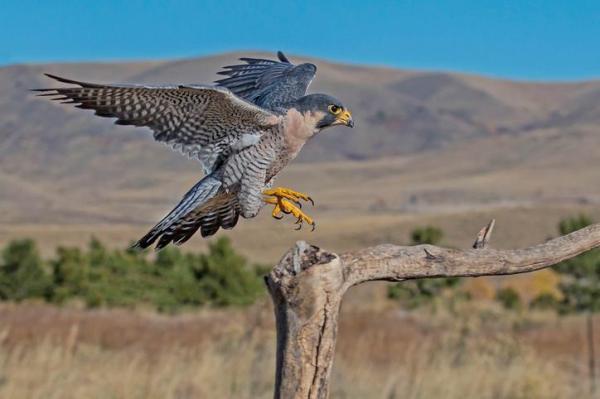
If you want to read similar articles to Types of Falcons - Species, Names and Characteristics, we recommend you visit our Facts about the animal kingdom category.
- Palacin, C. (2016). Eurasian Hobby – Falco subbuteo. In: Virtual Encyclopedia of Spanish Vertebrates. Salvador, A., Morales, MB (Eds.). National Museum of Natural Sciences, Madrid.
- Tucker, V. A., & Parrott, G. C. (1970). Aerodynamics of gliding flight in a falcon and other birds. Journal of Experimental Biology, 52(2), 345-367.





